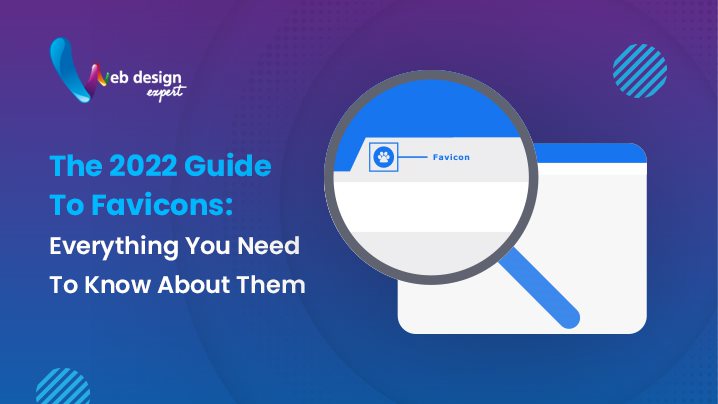THE 2022 GUIDE TO FAVICONS: EVERYTHING YOU NEED TO KNOW ABOUT THEM
Favicons are something that we have all seen but hardly recognize as something important. If you look at any open browser tabs on your computer, you will see a small, yet distinct icon/ logo sitting right at the top left. For example, if you open a new tab on your Google search engine, you will see the familiar “G” glowing at the left-hand corner in Google’s signature red-yellow-green combination. This is a favicon.
Never paid much attention to them, right? But if you own a Web Design Company, you must know everything about the favicons, for they are an integral part of developing a successful website. In case you are wondering why they are so important; you are in the right place. Read on to know what are favicons, why they are so significant in the contemporary market practices with regard to website development, and so on. In short, here is everything you need to know about favicons.
What Are Favicons?
Favicons are small 16X16 or 32X32 pixel icons that are placed on the top left corner of your webpage. These icons serve as the branding of your website. To explain, the main purpose of favicons is to help visitors locate the page easily on their browser, especially when multiple tabs are open at a time. It can also appear on bookmarks, toolbar apps, search history results, and search bars. To sum up, favicons can be found on anything that identifies a particular website.
Although it seems quite similar in various aspects, a favicon is essentially distinct from a logo. To begin with, a logo primarily serves as the visual representation of the brand. A favicon, on the other hand, mostly serves as a recognizing tool. i.e., something that helps the brand be identified among others. But it is not primarily responsible for establishing a brand identity. However, this does not mean that the design of favicons is to be taken lightly. Whenever you hire a Website Development Company India to design your webpage, make sure they can make your favicon stand out.
How Did Favicons Come About?
The roots of favicons trace all the way back to the era of Internet Explorer 5. It was introduced by Microsoft in March 1999 alongside Internet Explorer 5’s “Favorite” tab, which referred to bookmarks back then. The Favorite tab featured an option to include a distinguishing icon next to respective URLs. If the website had a favicon.ico file added to its root directory, its bookmark entry would display the custom icon. As time passed, most web browsers started to adopt these favicons next to the URLs, and thus, it soon became rather ubiquitous across the world wide web. Subsequently, it migrated to browser tabs.
Soon after, both Safari and Firefox accommodated .png support files for favicons. This marked a new era of favicon format, shifting from its previous .ico format. And it further took a major turn as Apple launched “apple-touch-icon.png” for iOS devices. Today, every web browser has incorporated high-density favicons, making it a common feature of web browsing.
Why Are Favicons Are Important?
For any Website Development Company India, knowing how to use favicons the right way is of prime importance these days. It plays a small, but highly significant role in the success of any website. It does not just help users locate your website as a visual marker but also adds legitimacy to your website. It helps boost online branding and gains the trust of your potential customers. It indicates that your website is ready to give its users a seamless browsing experience, unifying a diverse range of browser components into one branded platform.
In addition to customer experience, favicons can also help boost your website’s SEO. Although they are not directly responsible, they can play an instrumental role in improving your rank in the SERPs. For example:
- Favicons automatically give you a competitive advantage over the that don’t use them.
- Having a favicon means you have a good chance of being bookmarked on Chrome and other browsers.
- Favicons make browsing user-friendly, which in turn, helps increasing traffic to your website
How To Make The Right Favicons?
To design the perfect favicon, you must remember that its primary purpose is to act as visual markers. Therefore, they have to be unique, instantly identifiable, and memorable. In addition, there are a few things to consider while designing favicons:
- The size must be small but legible
- Don’t overcomplicate the design
- It’s best to make the favicons symbolic or graphic-based, but you can also use a single character as a favicon
- Consider the color scheme carefully
- Use the right file format
No matter whether you are working on someone else’s website as a Web Design Company or developing a webpage for your own brand, don’t skimp over favicons. They are extremely important to give your audience the ultimate browsing experience and help your website stand apart from the crowd.


